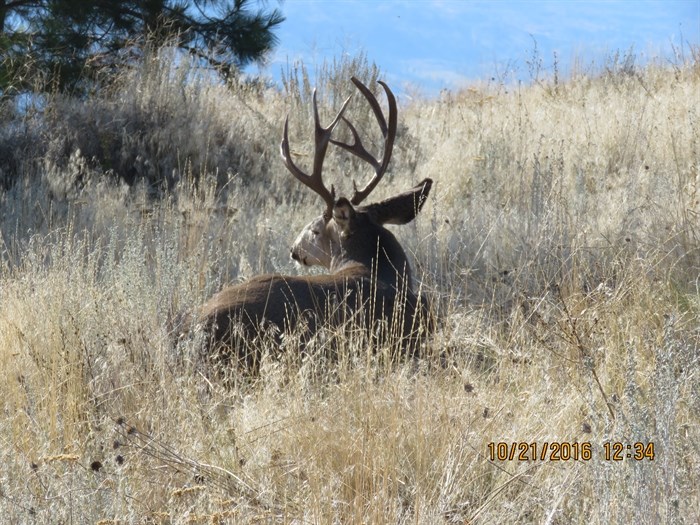
Reports came in to the RAPP hotline of this buck that was trapped in a volleyball net.
Image Credit: Contributed/Ken Owens Conservation Service
October 24, 2016 - 8:00 PM
KELOWNA - Over the weekend, Conservation Officers rescued a large buck that was became ensnared in a volleyball net.
While the image may seem strange, Ken Owens, Conservation Officer in the North Okanagan says it's actually quite common to get a call for something like this. iNFOnews reported last summer on the dangers that urban deer face.
"It's more common than a lot of people think, especially in the urban environment. The animal is not well-suited for this environment, there are a lot of dangers to them here," Owens says.
"The urban deer population is growing leaps and bounds. At this point, in the Kelowna area, at least once or twice or week, mule deer are getting caught in fences."
The time of year likely played a role in how this buck got trapped.
Right now is mating season for deer, and bucks are displaying their dominance by thrashing around. Owens says this buck was likely throwing himself around and then got trapped in the net.
Calls came in to the Report All Poachers and Polluters line, from people who were concerned with the animal's well-being.
After tranquilizing it, officers marked the buck with an ear tag, embedded a microchip and gave it drugs to reverse the tranquilization and then set it free.
Conservation Officers are all trained in tranquilization methods and the operation went off very smoothly, Owens says.

The buck that was trapped is seen here in the field behind the house where he was found.
Image Credit: Contributed/Ken Owens Conservation Service
The hunting synopsis strongly recommends that hunters avoid harvesting a marked deer because they can be unsafe for consumption. For instance, Owens says this deer will have the tranquilization and reversal drugs in its system for approximately 30 days.
Hunters and the general public can identify a marked deer by the tag officers attach to the animal's ear. If a tagged deer is harvested by mistake, Owens stresses that the Conservation Service must be contacted.
The best way to contact the Conservation Service is to call the 'Report All Poachers and Polluters (RAPP)' hotline toll free at 1-877-952-7277.
To contact a reporter for this story, email Kim Anderson or email the editor. You can also submit photos, videos or news tips to the newsroom and be entered to win a monthly prize draw.
We welcome your comments and opinions on our stories but play nice. We won't censor or delete comments unless they contain off-topic statements or links, unnecessary vulgarity, false facts, spam or obviously fake profiles. If you have any concerns about what you see in comments, email the editor in the link above.
News from © iNFOnews, 2016